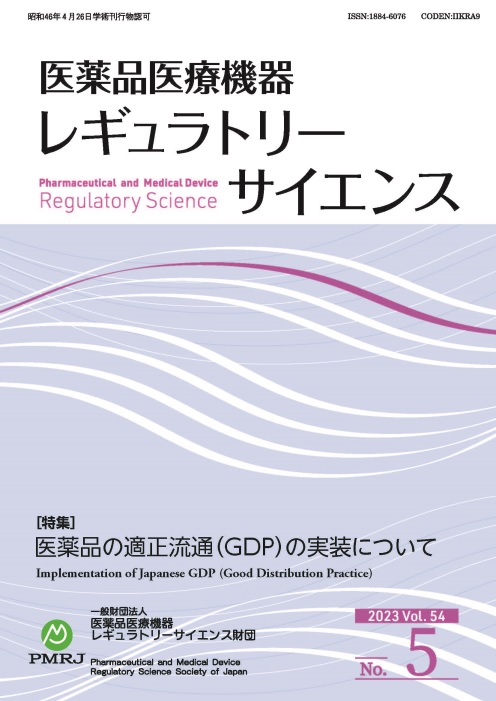Volume 54, Issue 5
Displaying 1-17 of 17 articles from this issue
- |<
- <
- 1
- >
- >|
-
2023 Volume 54 Issue 5 Pages 372-379
Published: 2023
Released on J-STAGE: October 27, 2023
Download PDF (839K) -
2023 Volume 54 Issue 5 Pages 380-385
Published: 2023
Released on J-STAGE: October 27, 2023
Download PDF (641K) -
2023 Volume 54 Issue 5 Pages 386-394
Published: 2023
Released on J-STAGE: October 27, 2023
Download PDF (1519K) -
2023 Volume 54 Issue 5 Pages 395-399
Published: 2023
Released on J-STAGE: October 27, 2023
Download PDF (424K) -
2023 Volume 54 Issue 5 Pages 400-406
Published: 2023
Released on J-STAGE: October 27, 2023
Download PDF (24281K)
-
2023 Volume 54 Issue 5 Pages 407-410
Published: 2023
Released on J-STAGE: October 27, 2023
Download PDF (650K) -
2023 Volume 54 Issue 5 Pages 411-416
Published: 2023
Released on J-STAGE: October 27, 2023
Download PDF (362K)
-
2023 Volume 54 Issue 5 Pages 417-420
Published: 2023
Released on J-STAGE: October 27, 2023
Download PDF (333K)
-
2023 Volume 54 Issue 5 Pages 421-423
Published: 2023
Released on J-STAGE: October 27, 2023
Download PDF (258K)
-
2023 Volume 54 Issue 5 Pages 424-427
Published: 2023
Released on J-STAGE: October 27, 2023
Download PDF (254K)
-
2023 Volume 54 Issue 5 Pages 428-438
Published: 2023
Released on J-STAGE: October 27, 2023
Download PDF (1620K) -
2023 Volume 54 Issue 5 Pages 439-454
Published: 2023
Released on J-STAGE: October 27, 2023
Download PDF (634K)
-
2023 Volume 54 Issue 5 Pages 455-471
Published: 2023
Released on J-STAGE: October 27, 2023
Download PDF (479K)
-
2023 Volume 54 Issue 5 Pages 472-474
Published: 2023
Released on J-STAGE: October 27, 2023
Download PDF (231K) -
2023 Volume 54 Issue 5 Pages 475-478
Published: 2023
Released on J-STAGE: October 27, 2023
Download PDF (263K) -
2023 Volume 54 Issue 5 Pages 479-489
Published: 2023
Released on J-STAGE: October 27, 2023
Download PDF (354K)
-
2023 Volume 54 Issue 5 Pages 490-498
Published: 2023
Released on J-STAGE: October 27, 2023
Download PDF (29504K)
- |<
- <
- 1
- >
- >|
